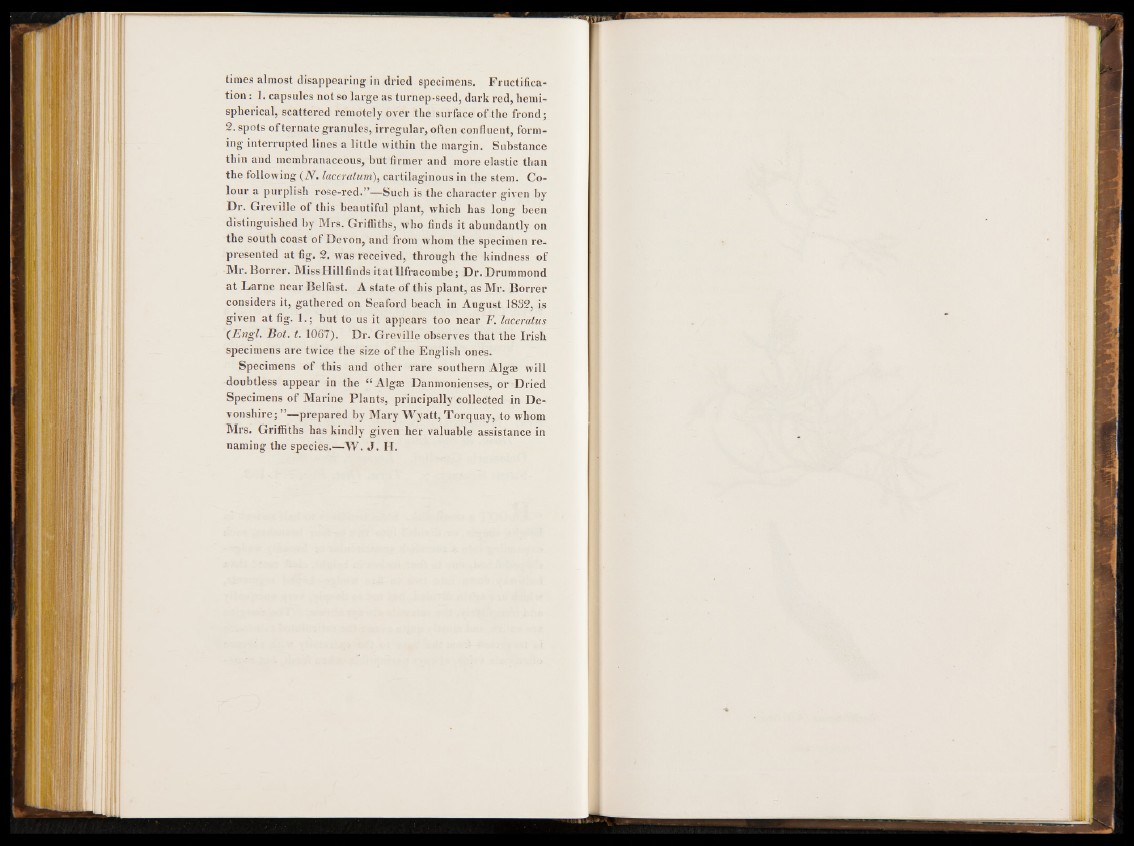
times almost disappearing in dried specimens. Fructification
: 1. capsules not so large as turnep-seed, dark red, hemispherical,
scattered remotely over the surface of the frond;
2. spots of ternate granules, irregular, often confluent, forming
interrupted lines a little within the margin. Substance
thin and membranaceous, but firmer and more elastic than
the following (N. laceralum), cartilaginous in the stem. Colour
a purplish rose-red.”—Such is the character given by
Dr. Greville of this beautiful plant, which has long been
distinguished by Mrs. Griffiths, who finds it abundantly on
the south coast of Devon, and from whom the specimen represented
at fig. 2. was received, through the kindness of
Mr.Borrer. MissHillfindsitatIlfracombe; Dr.Drummond
at Larne near Belfast. A state of this plant, as Mr. Borrer
considers it, gathered on Seaford beach in August 1832, is
given at fig. 1.; but to us it appears too near F. laceratus
{Engl. Bot. t. 1067). Dr. Greville observes that the Irish
specimens are twice the size of the English ones.
Specimens of this and other rare southern Algae will
doubtless appear in the “ Algae Danmonienses, or Dried
Specimens of Marine Plants, principally collected in Devonshire;”—
prepared by Mary Wyatt, Torquay, to whom
Mrs. Griffiths has kindly given her valuable assistance in
naming the species.—W. J . H.